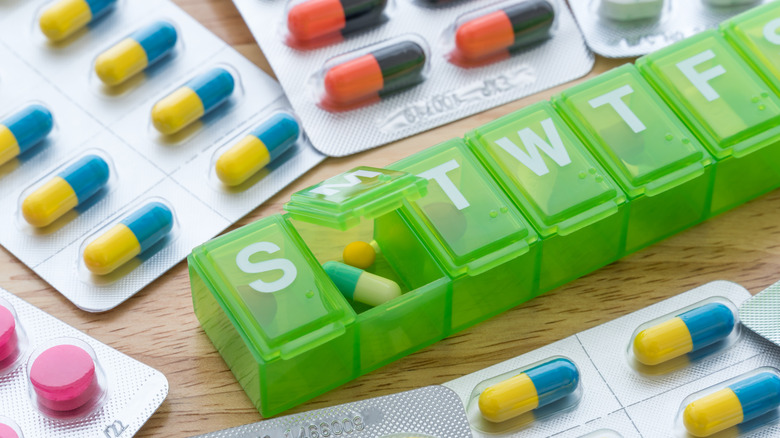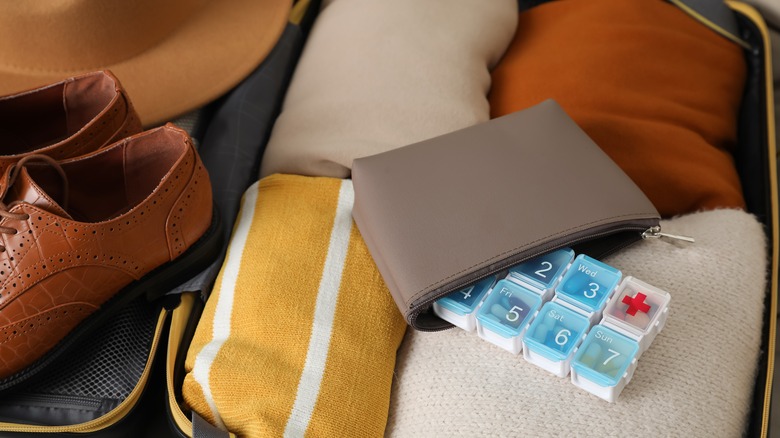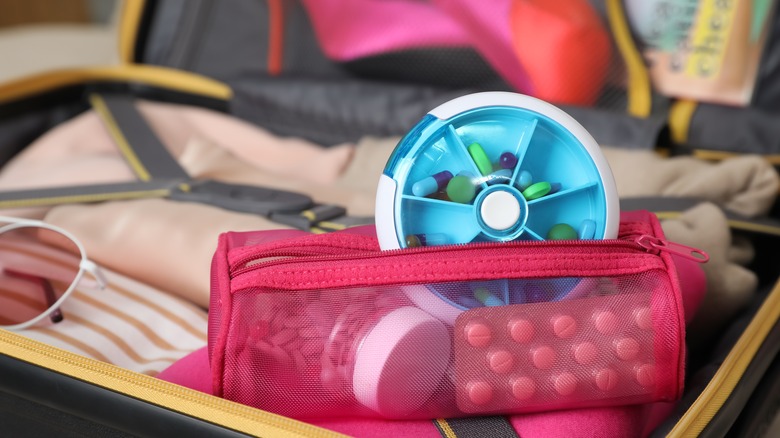How To Make Traveling With Your Medication Even Easier
You're standing in line at airport security, watching TSA tip all of your carefully packed medication all over the place. It's not exactly a brilliant start to a vacation. Luckily, this is a very unlikely scenario, at least in the U.S. However, flying with medication does require a little extra planning to make sure it all goes smoothly.
First, let's address some common misconceptions. Some people think that you can't take prescription drugs abroad. You can (with some caveats). Others think you can't travel with liquid medication. Again, this isn't true. Many others believe that all medications must be sealed in their original packaging and that you must carry a prescription with you at all times. This again isn't true, at least in the U.S. The TSA also explicitly states that nitroglycerin tablets and spray are permitted on flights.
But here come some of the caveats: TSA rules apply to travelers in the U.S. If you're flying domestically, you can follow their rules completely. However, if you're heading out of the country, the rules at your destination may be different.
What medications does the TSA allow on flights?
The TSA doesn't place many limitations on the types of prescription medications that are permitted on flights. According to their rules, you can take pills or other solid forms of medication onto flights in unlimited amounts. You do not need to disclose that you're carrying medications to the security officer. You can also take liquid medications in your carry-on bag in larger amounts than the usual 3.4 ounces, though you must declare this before screening. The TSA stipulates that the liquid quantity should be reasonable for the flight. Ten gallons of something might be pushing it.
Next, you do not have to keep your medications in their original packaging according to TSA rules. This means that you can put your medication into a pill organizer before you travel. However, states have different laws about how prescription medications should be labeled, so it's always best to check locally. Again, if you're traveling internationally, check the local embassy website for which medications are permitted.
How to pack your medications for a flight
Our biggest recommendation is to put all of your medications in your carry-on bag. That way, you will have access to them throughout your time in the airport and on the plane. Plus, if your luggage happens to get lost in transit, your medications won't disappear with it. TSA permits you to carry medications in both your carry-on and checked bags, but check them at your own risk. And remember, the TSA does permit you to take your medications out of their original containers, so feel free to organize them before you travel if you wish.
If, during your research, you find that the state or country you're traveling to requires you to have a prescription for your medication, make sure you have that with you and keep a photo of it on your phone too. To make sure that traveling with medication is easy, watch the TSA's video showing how best to travel with medication, and what the procedure at the airport will be before you travel.


